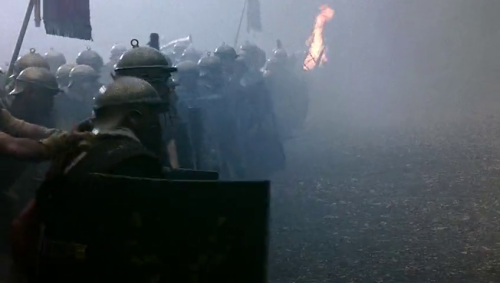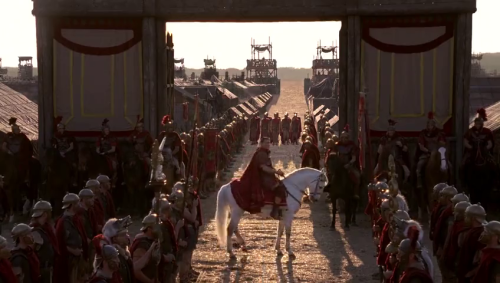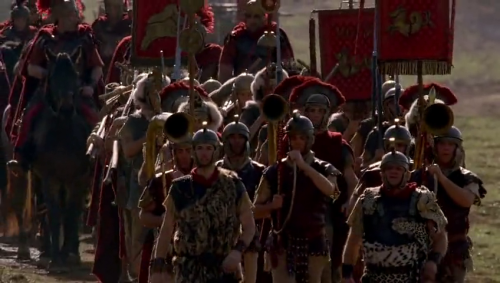ex-libris-blog:The 13th LegionLegio tertia decima Geminia (the 13th Twin Legion), also known as Legi
ex-libris-blog:The 13th LegionLegio tertia decima Geminia (the 13th Twin Legion), also known as Legio tertia decima Gemina, was a legion of the Imperial Roman army. It was one of Julius Caesar’s key units in Gaul and in the civil war and was the legion with which he famously crossed the Rubicon on January 10, 49 BC. The legion appears to have still been in existence in the fifth century. Its symbol was the lion.Legio XIII was levied by Julius Caesar in 57 BC, before marching against the Belgae, in one of his early interventions in intra-Gallic conflicts. During the Gallic Wars (58–51 BC), Legio XIII was present at the Battle against the Nervians, the Siege of Gergovia, and while not specifically mentioned in the sources, it is reasonable to assume that Legio XIII was also present for the Battle of Alesia.After the end of the Gallic wars, the Roman Senate refused Caesar his second consulship, ordered him to give up his commands and demanded he return to Rome to face prosecution. Forced to choose either the end of his political career, or civil war, Caesar brought Legio XIII across the Rubicon river and into Italy. The legion remained faithful to Caesar during the resulting civil war between Caesar and the conservative Optimates faction of the senate, whose legions were commanded by Pompey. After the decisive victory over Pompey at Pharsalus, the legion was to be disbanded, and the legionaries “pensioned off” with the traditional land grants; however, the legion was recalled for the Battle of Thapsus (46 BC) and the final Battle of Munda (45 BC). After Munda, Caesar disbanded the legion, retired his veterans and gave them farmland in Italy.Augustus reconstituted the legion once again in 41 BC to deal with rebellion of Sextus Pompeius (son of Pompey) in Sicily.Legio XIII acquired the cognomen Gemina (“twin”, a common appellation for legions constituted from portions of others) after being reinforced with veteran legionaries from other legions following the war against Mark Antony and the Battle of Actium.After the disaster of the Battle of the Teutoburg Forest in AD 9, the legion was sent as reinforcements to Augusta Vindelicorum (Augsburg), and then to Vindonissa, Raetia, to prevent further attacks from the Germanic tribes.Emperor Claudius sent them back to Pannonia around 45; In the year of the four emperors (69), XIII Gemina supported first Otho and then Vespasian against Vitellius, fighting in the two Battles of Bedriacum.Under Trajan the Legion took part in both Dacian wars (101-102, 105-106) and it was transferred by Trajan in 106 to the newly conquered province of Dacia (in Apulum, modern Alba Iulia, Romania) to garrison it.Vexillationes (detachment of a Roman legion formed as a temporary task force) of the XIII Gemina fought under Emperor Gallienus in northern Italy. The emperor issued a legionary antoninianus (coin) celebrating the legion and showing the legion’s lion (259-260). Another vexillatio was present in the army of the emperor of the Gallic Empire Victorinus: this emperor, in fact, issued a gold coin celebrating the legion and its emblem.In 271, the legion was relocated when the Dacia province was evacuated and restationed in Dacia Aureliana.In the 5th century, according to the Notitia Dignitatum, a legio tertiadecima gemina was in Babylon in Egypt, a strategic fortress on the Nile at the traditional border between Lower Egypt and Middle Egypt, under the command of the Comes limitis Aegypti.Images; Rome (HBO) season 1; text (source) -- source link
#history#roman history






